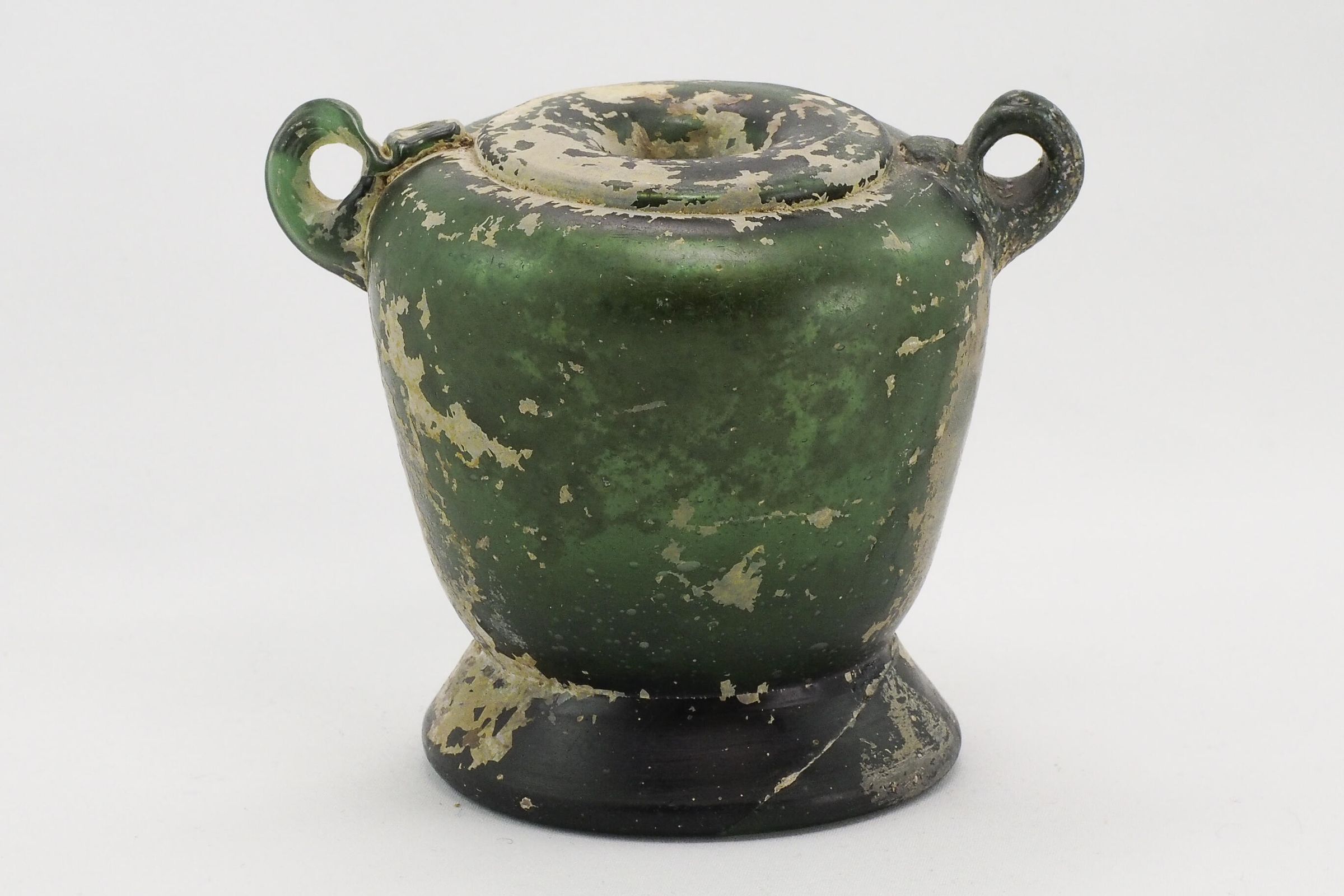Inkwell
Name/Title
InkwellEntry/Object ID
11NE-Mi52-188Description
The flattened disk-shaped rim attaches to an internal funneled neck made separately from body. The shoulders are rounded with two opposed applied loop handles. The handles are dropped onto the top of the shoulder, pulled down to the base of the shoulder, then pulled up and around, attaching just below the starting attachment point. The inversed trapezoidal body constricts at its junction with the outward-sloping tubular base that is concave with a pontil mark. The vessel is intact with some iridescence and encrustation.Use
WritingContext
Inkwells of the Medieval and Islamic periods are characterized by their square, cylindrical, or polygonal shapes. They also have a rim and funneled internal neck which was made separately from the body, being fused together while the glass was still hot. The well prevents the ink from spilling and also might inhibit evaporation. The use of the funneled internal neck was also thought to have restricted the accumulation of dirt or dust in the vessel and made the vessel easy to clean. Plain inkwells were more widely produced as they were popularly used in scriptoria, manuscript production and letter-copying centers. Black ink was primarily used throughout the ancient world. However, in the Medieval period, the use of metallic ink was introduced. Gold and silver ink were used in manuscripts, adding symbolic and material value to the work. Powdered gold was fist used in manuscripts, dating to the third century BCE.Made/Created
Date made
800 CE - 1100 CETime Period
Islamic Golden AgeEthnography
Culture/Tribe
Near Eastern - Islamic

